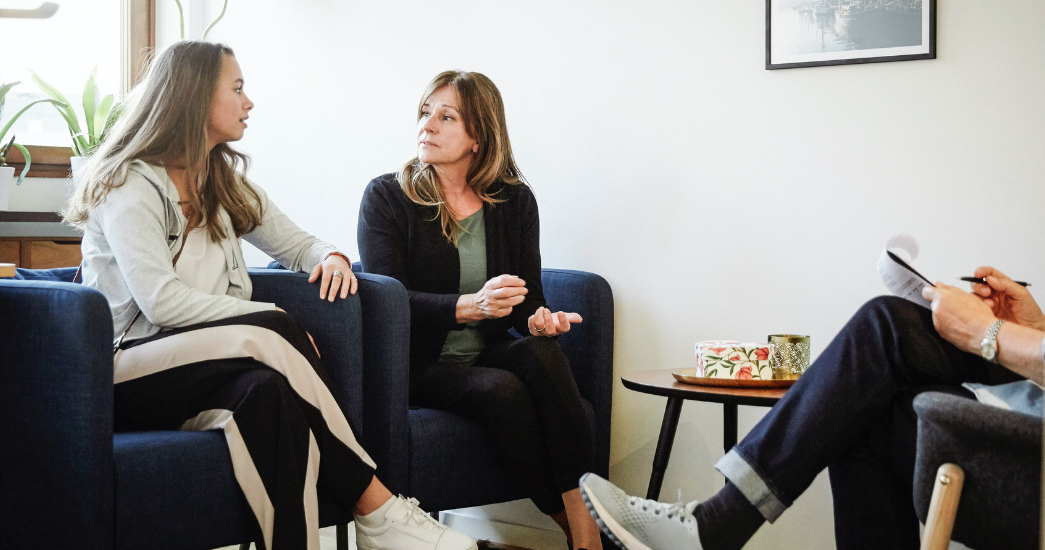
It’s often said children are resilient, but navigating the changes of the COVID-19 pandemic can make any child — or adult — vulnerable to some anxiety. However, when worry frequently prevents children from enjoying everyday activities, or disrupts sleep or concentration, it may be time to act.
According to the CDC, over 6% of children ages six to 11 and over 10% of kids ages 12-17 are diagnosed with anxiety disorders. There are several different types of anxiety disorders that may affect children. These are the most common:
- Generalized Anxiety Disorder (GAD): Children with GAD may worry about the same things other children worry about — like school, natural disasters, the health of family or friends and their own health and safety – but they do so excessively and have no ability to turn it off.
- Panic Disorder: If a child has two or more panic attacks, they may have Panic Disorder. A panic attack is an intense episode of anxiety, with no apparent cause, which is accompanied with symptoms like a pounding heart, shortness of breath or dizziness.
- Separation Anxiety Disorder: Most children experience some separation anxiety when they’re younger, but when older children get extremely concerned with separation and have trouble calming down after their parents leave, they may have Separation Anxiety Disorder.
- Social Phobia: Beyond shyness, Social Phobia is when a child suffers extreme anxiety in everyday social situations. Some may have trouble talking to peers or interacting in school activities.
Learn More >> Find behavioral health topics & resources
Signs your child may struggle with an anxiety disorder.
Young children with anxiety may show a variety of physical, emotional and behavioral symptoms. From frequent headaches and stomachaches to loss of appetite and sleeplessness, anxiety manifests itself in different ways. Young children may avoid playing with others, worry unnecessarily, have frequent meltdowns or become very sensitive. Older kids may show anxiety differently, including worrying excessively about what others think, perfectionism or a drop in grades.
It’s important to note that all kids worry sometimes; it’s normal. But when the worry gets unrealistic or out of proportion, it’s time to look closer at the situation. Severe anxiety is uncontrollable and doesn’t go away. The good news is that almost all anxiety disorders are treatable.
What causes anxiety disorders in children?
There are several factors that may contribute to anxiety disorders. In some cases, they may be caused when certain chemicals, like dopamine and serotonin, are imbalanced in the brain. Environmental traumas, like a divorce or death, may also trigger anxiety disorders. There are even some physical health conditions, like thyroid problems or heart arrythmias, that may increase the risk of anxiety disorders.
Almost three out of 10 children with ADHD also have an anxiety disorder. When children struggle with working memory, time management, and organization — as many children with ADHD do — it can often lead to chronic stress and an accompanying anxiety disorder. Other studies point to an increased chance of anxiety disorders stemming in part from unchecked social media use and screen time, where comparison culture is rampant and can have a profoundly negative impact on self-esteem. Parents can help ensure screen time is being used positively and without excess. It’s also a good idea to remind children of important, in-person communication skills that can be overshadowed by frequently communicating via screens, like making eye contact and showing active listening through body language.
Performance anxiety is also a very real pressure many children face. Watching peer achievements in academics or sports can add a level of anxiety that can sometimes get out of control. Parents can help manage performance anxiety with a variety of techniques. Something as simple as deep breathing and visualization can help take the edge off a big event. Mental rehearsals are also just as important as physical ones and will help children become emotionally prepared for an important game or presentation. Goal setting helps children set realistic expectations and even just smiling will help reduce anxiety when the pressure feels like it’s building.
The COVID factor.
It’s no surprise that the pandemic has taken its toll on children’s anxiety levels. Loss of developmentally important routines and social interactions certainly made an impact. 22% of parents reported their children had overall worsened mental or emotional health in 2020, noting elevated symptoms of depression and anxiety. This was exacerbated in some families by stress brought on with income loss during the pandemic. Parents’ stress levels can have a direct correlation to stress levels of their children, so children may experience the same anxiety, even if indirectly. It’s important for parents to do some self-reflecting and create stress-reducing techniques for themselves. A healthy family environment can go a long way in reducing stress levels for children.
How to help your child manage anxiety
Anxiety can’t necessarily be eliminated, but when parents express positivity, manage expectations, and communicate openly, they help to give children the tools they need to better cope with stressful situations. Professional support and treatment options are also available and important to pursue if your child’s struggles increase. Parents are important advocates when it comes to ensuring their children live healthy, well-balanced lives. Educating yourself on anxiety disorders and what your child may be experiencing is the first step in helping them receive the care and support they may need.
Learn More >> Find a health care provider
Concerned about your child’s emotional wellbeing? Talk to your pediatrician, as familiarity with your child’s physical health and development could be helpful in identifying your next steps. Members of Tufts Health Plan or Harvard Pilgrim Health Care also have access to professional support embedded in their plan’s Health Services team, including child psychiatrists and specialty clinical teams that can help guide parents and guardians to behavioral health support for their child. Both Harvard Pilgrim members and Tufts Health Plan members are encouraged to visit their plan’s site for additional information on services available as part of their plan.


